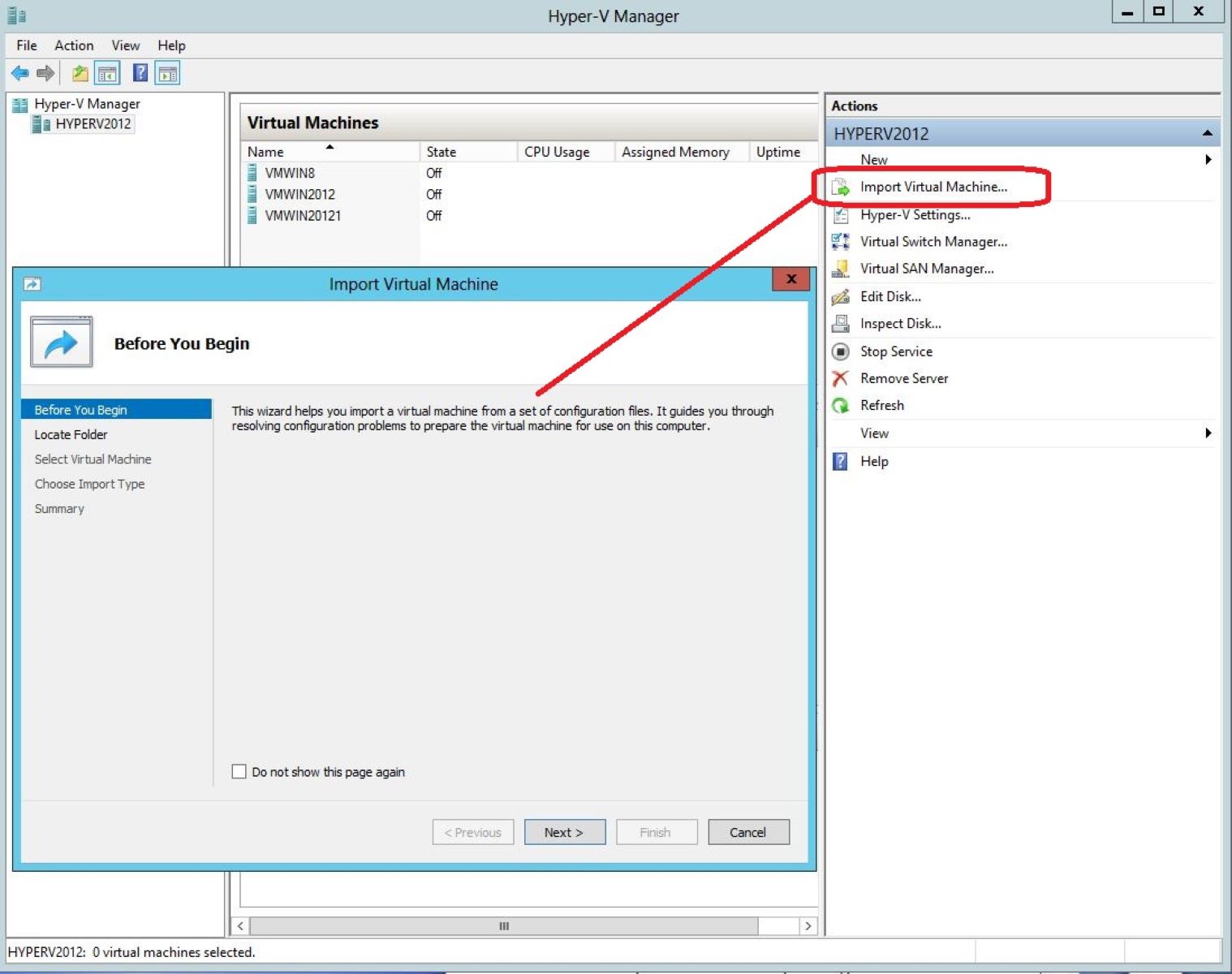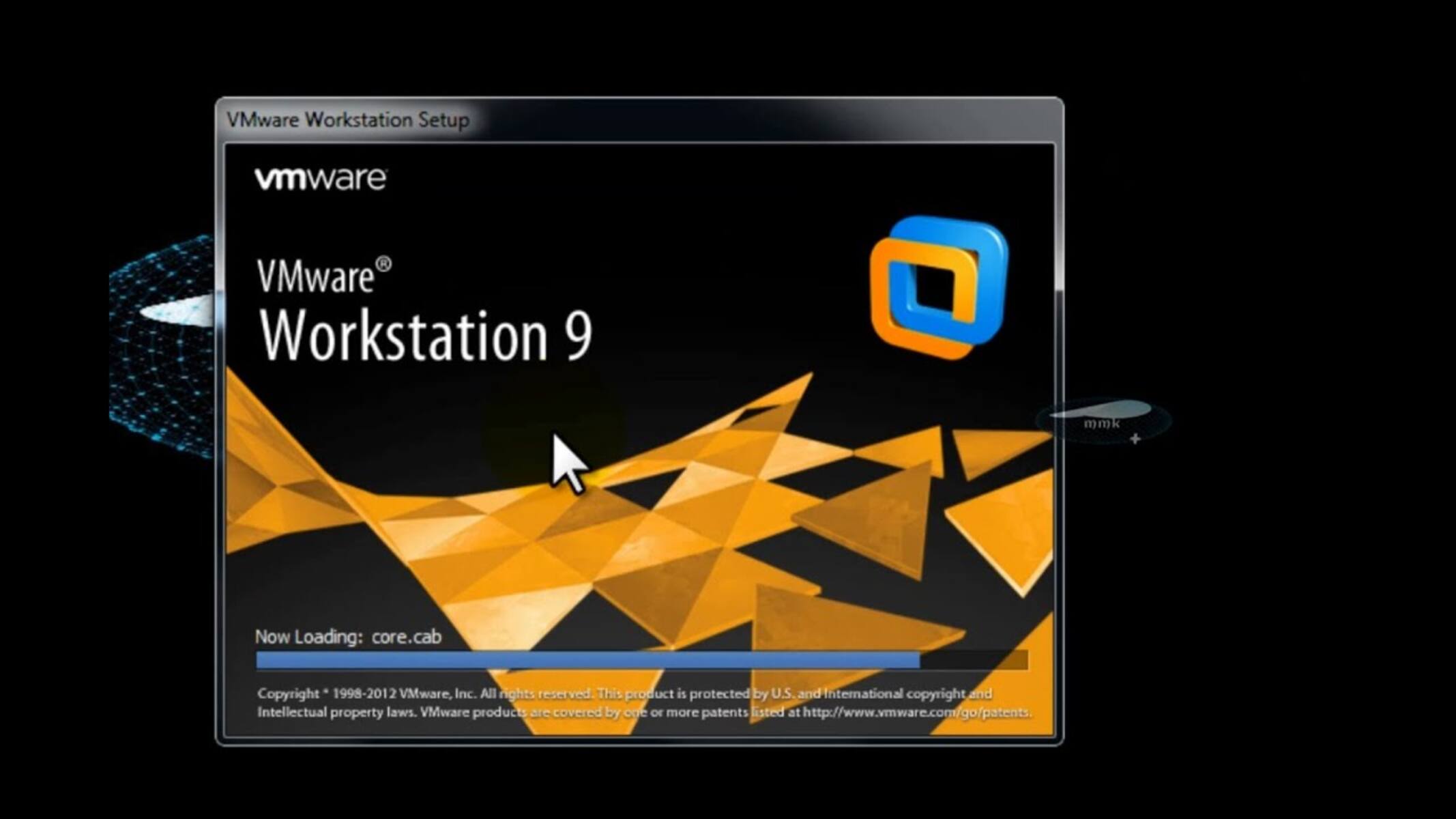Overview of Ova Virtual Machine
A virtual machine (VM) is an emulation of a computer system that allows multiple operating systems to run on a single physical machine. It provides a flexible and efficient solution for businesses and individuals to utilize multiple virtual environments without the need for separate physical hardware.
One popular format for virtual machines is the Ova Virtual Machine. OVA stands for Open Virtualization Appliance, and it is a standardized container format that encapsulates an entire virtual machine, including the operating system, applications, and configuration settings. OVA files are widely used for easy deployment and sharing of virtual machines across different virtualization platforms.
The Ova Virtual Machine offers several advantages over traditional hardware-based solutions. First and foremost, it enables efficient resource utilization by consolidating multiple virtual machines onto a single physical server. This results in cost savings on hardware and energy consumption, as well as simplified management and maintenance.
Another key advantage is the ability to quickly provision and deploy virtual machines. With OVA, you can package and distribute your virtual machine as a self-contained file, making it easy to transfer and launch on different virtualization platforms. This portability allows for faster system setup and configuration, as well as seamless collaboration and sharing among teams.
The flexibility of the Ova Virtual Machine extends to its compatibility with various operating systems and applications. OVA files can be used with popular virtualization platforms such as VMware, VirtualBox, and Hyper-V. This cross-platform support ensures that your virtual machines can be deployed and accessed on a wide range of systems, enhancing flexibility and accessibility.
The Ova Virtual Machine is utilized in various industries and applications. It is commonly used in software development and testing environments, where developers can create and test applications in isolated virtual environments without interfering with their production systems. It is also employed in the field of education, providing students and researchers with virtual lab environments for learning and experimentation.
Setting up an Ova Virtual Machine is relatively straightforward. You start by obtaining the OVA file, which contains the preconfigured virtual machine. Then, you import the OVA file into your preferred virtualization platform and follow the provided instructions to customize the virtual machine settings according to your needs. Once configured, you can start the virtual machine and begin using it just like a physical computer.
In rare cases, you may encounter issues or errors when working with Ova Virtual Machines. Some common problems include compatibility issues between different virtualization platforms, insufficient system resources to run the virtual machine, or conflicts with the host operating system. Troubleshooting these issues may involve updating your virtualization software, allocating more resources to the virtual machine, or seeking assistance from online forums and support communities.
What is a Virtual Machine?
A virtual machine (VM) is a software emulation of a physical computer system that can run multiple operating systems simultaneously on a single physical machine. It creates a virtualized environment where each operating system operates independently, with its own set of dedicated resources, including CPU, memory, storage, and network connectivity.
The concept of a virtual machine is rooted in the idea of virtualization, which aims to maximize the utilization of hardware resources by consolidating multiple virtual systems onto a single physical server. With virtual machines, businesses and individuals can achieve better efficiency, more flexibility, and cost savings compared to traditional hardware-based setups.
Virtual machines work by using a hypervisor, also known as a virtual machine monitor, to allocate and manage the physical resources of the host machine. The hypervisor creates virtualized hardware components, such as virtual processors, memory, and storage devices, for each virtual machine. It also handles the communication between the virtual machines and the host system, ensuring reliable and secure operation.
One of the key benefits of virtual machines is their ability to provide isolation and sandboxing for running multiple operating systems or applications. This isolation ensures that any changes or issues within one virtual machine do not affect the other virtual machines or the underlying host system. Virtual machines also allow for easy snapshotting and cloning, providing a quick and efficient way to create backups or replicate entire environments.
Virtual machines are widely used in various industries and scenarios. In the business world, they are used for server consolidation, allowing companies to run multiple servers on a single physical machine, reducing hardware costs and simplifying management. Virtual machines are also commonly used for software development and testing, enabling developers to test their applications in different environments without the need for multiple physical machines.
In addition, virtual machines are used for education and training purposes, providing students with access to virtual lab environments where they can learn and experiment with different operating systems and applications. The healthcare industry utilizes virtual machines for medical imaging and analysis, while cloud service providers rely on virtualization to offer scalable and customizable infrastructure to their customers.
To create a virtual machine, you need virtualization software, such as VMware, VirtualBox, or Hyper-V, installed on your host machine. These software platforms allow you to create, configure, and manage virtual machines with ease. Once the virtual machine is set up, you can install the desired operating system and applications, just like you would on a physical computer.
Overall, virtual machines are a powerful and versatile solution for running multiple operating systems and applications on a single physical machine. They offer cost savings, flexibility, and enhanced productivity for businesses and individuals alike, making them a valuable tool in the modern computing landscape.
What is Ova Virtual Machine?
Ova Virtual Machine, also known as Open Virtualization Appliance, is a standardized container format that encapsulates an entire virtual machine, including the operating system, applications, and configuration settings. It provides a convenient and efficient method for packaging and distributing virtual machines across different virtualization platforms.
Unlike other virtual machine formats, which may require manual configuration and installation, OVA files offer a streamlined approach to deploying virtual machines. They contain a preconfigured virtual machine, eliminating the need for complex setup processes. This makes Ova Virtual Machines ideal for rapid deployment, testing, and sharing of virtual environments.
At its core, an Ova Virtual Machine is essentially a single file that acts as a self-contained package for the virtual machine. It contains all the necessary files and settings required to run the virtual machine, including the virtual disk, virtual hardware configuration, and metadata. This encapsulation allows for easy transportability and distribution of virtual machines across different platforms, making collaboration and sharing seamless.
One of the primary benefits of Ova Virtual Machines is their compatibility with various virtualization platforms. OVA files can be used with popular virtualization software such as VMware, VirtualBox, and Hyper-V. This cross-platform support ensures that OVA files can be easily shared and used on different systems, providing flexibility and accessibility to users.
Another advantage of Ova Virtual Machine is its ability to simplify the deployment and management of virtual environments. With OVA files, users can quickly import and create instances of virtual machines without going through the complex installation process. This accelerates the setup time for virtual machines and reduces the chance of configuration errors.
Moreover, Ova Virtual Machines offer consistent performance and stability. Each OVA file contains a well-defined virtual hardware configuration that ensures the virtual machine runs optimally across different virtualization platforms. This standardization helps in maintaining the desired performance and stability of the virtual machine, regardless of the host environment.
Additionally, OVA files can be customized to suit specific needs or requirements. Users can modify the virtual hardware settings, such as memory allocation and virtual disk size, before importing the OVA file to their virtualization platform. This flexibility allows for tailored virtual machine configurations based on the workload or specific project requirements.
In summary, Ova Virtual Machine is a standardized container format that simplifies the deployment, sharing, and management of virtual machines. It offers cross-platform compatibility, rapid deployment, and flexibility, making it a valuable tool for individuals and businesses seeking quick and efficient virtual machine solutions.
Advantages of Ova Virtual Machine
Ova Virtual Machine (Open Virtualization Appliance) offers several advantages over traditional hardware-based solutions. Let’s explore some of the key benefits of utilizing Ova Virtual Machines:
1. Simplified Deployment: Ova Virtual Machines come preconfigured, eliminating the need for complex installation and setup procedures. This simplifies the deployment process, allowing users to quickly import and launch instances of virtual machines without wasting time on tedious configuration tasks.
2. Portability: Ova Virtual Machines are encapsulated in a single file, making them highly portable. Whether you’re transferring virtual machines between different physical machines or sharing them with colleagues, OVA files provide a portable and self-contained package that can be easily transported and launched on various virtualization platforms.
3. Compatibility: OVA files offer cross-platform compatibility, allowing virtual machines to be used across different virtualization platforms such as VMware, VirtualBox, and Hyper-V. This interoperability ensures that Ova Virtual Machines can be seamlessly shared and utilized on different systems, providing flexibility and accessibility to users.
4. Rapid Scaling: With Ova Virtual Machines, scaling up or down becomes a straightforward process. By cloning or snapshotting the OVA file, you can create multiple instances of the same virtual machine or roll back to a previous state in an instant. This capability allows for quick and efficient scalability, making it ideal for environments that require dynamic resource allocation.
5. Cost Efficiency: Ova Virtual Machines enable companies to optimize their hardware resources by consolidating multiple virtual machines onto a single physical server. This results in significant cost savings in terms of hardware expenses, energy consumption, and maintenance costs. Additionally, the reduced need for physical hardware simplifies the IT infrastructure, leading to lower management expenses.
6. Flexibility and Customization: OVA files can be customized to fit specific requirements. Before importing the OVA file, users can modify the virtual hardware settings, such as memory allocation, disk size, or network configurations, to match the desired workload or project specifications. This flexibility allows for tailored virtual machine configurations based on individual needs.
7. Enhanced Collaboration: Ova Virtual Machines promote seamless collaboration among team members. By sharing an OVA file, teams can quickly distribute and launch identical virtual machines, ensuring consistency across the development, testing, or training processes. This collaborative approach saves time, increases productivity, and facilitates efficient teamwork.
8. Improved Disaster Recovery: OVA files simplify disaster recovery efforts. By creating backups or snapshots of the OVA files, users can easily restore virtual machines to previous known states or recover from system failures. This enhances data resilience and minimizes downtime, ensuring business continuity in the event of contingencies.
In summary, Ova Virtual Machine offers a range of advantages, including simplified deployment, portability, compatibility, rapid scalability, cost efficiency, flexibility, enhanced collaboration, and improved disaster recovery capabilities. These benefits make Ova Virtual Machines a valuable solution for businesses and individuals seeking efficient and flexible virtualization solutions.
Using Ova Virtual Machine in Different Industries
Ova Virtual Machine (Open Virtualization Appliance) is a versatile solution that finds applications in various industries. Let’s explore how Ova Virtual Machines are utilized in different sectors:
1. Software Development and Testing: Ova Virtual Machines are extensively used in the software development and testing industry. Developers can create isolated virtual environments using OVA files, allowing them to test applications and software in different configurations without impacting their production systems. This reduces the risk of bugs, compatibility issues, and conflicts, leading to more efficient and reliable software development and testing processes.
2. Education and Training: Ova Virtual Machines play a vital role in education and training. Virtual lab environments created using OVA files provide students and researchers with hands-on experience in various operating systems and applications. This allows for practical learning, experimentation, and simulation of real-world scenarios without the need for dedicated physical hardware. Ova Virtual Machines facilitate interactive and immersive learning experiences in fields like computer science, information technology, cybersecurity, and more.
3. Cloud Computing and Hosting: Ova Virtual Machines are leveraged by cloud service providers to deliver on-demand infrastructure and hosting solutions. The containerized nature of OVA files allows for easy deployment and scaling of virtual machines in cloud environments. Ova Virtual Machines provide the foundation for cloud-based services, enabling businesses to access scalable resources, such as virtual servers and databases, without the need for extensive hardware investments or maintenance.
4. Healthcare and Medical Research: Ova Virtual Machines are utilized in the healthcare industry for medical imaging and analysis. Virtual machines created using OVA files can simulate complex medical systems, helping doctors and researchers study diseases, test treatment options, and analyze medical data in a controlled and secure environment. Ova Virtual Machines also facilitate collaboration among medical professionals by providing a standardized platform to share research findings and clinical experiences.
5. Data Analytics and Research: Ova Virtual Machines find applications in data analytics and research fields. By leveraging virtual machines created with OVA files, data scientists and researchers can perform complex data analysis, machine learning experiments, and simulations on large datasets. Ova Virtual Machines provide a customizable and scalable environment that allows researchers to efficiently conduct experiments and analyze results, accelerating the discovery and development of new insights and solutions.
6. IT Operations and System Administration: Ova Virtual Machines are valuable tools for IT operations and system administration. By deploying virtual machines with OVA files, IT teams can streamline system provisioning, configuration, and management processes. Virtual machines offer a way to test and deploy system updates, evaluate new software versions, and troubleshoot issues without impacting the production environment. This improves system reliability, reduces downtime, and enhances IT operational efficiency.
7. Financial Services and Banking: Ova Virtual Machines have applications in the financial services and banking sector. The secure and isolated nature of virtual machines created with OVA files allows banks and financial institutions to run critical software applications, perform sensitive transactions, and protect customer data. Ova Virtual Machines provide a flexible and scalable infrastructure that ensures compliance with regulatory standards and strengthens data security measures.
Overall, Ova Virtual Machines have diverse applications across numerous industries. From software development and testing to education, healthcare, cloud computing, data analytics, IT operations, and finance, Ova Virtual Machines offer flexible and efficient virtualization solutions that enhance productivity, reduce costs, and enable innovation across various sectors.
How to Set Up Ova Virtual Machine
Setting up an Ova Virtual Machine (Open Virtualization Appliance) is a straightforward process that involves a few simple steps. Here’s a guide on how to set up your Ova Virtual Machine:
1. Obtain the OVA File: The first step is to obtain the OVA file for the virtual machine you want to set up. You can download OVA files from various sources, including software vendors, open-source projects, or virtual machine marketplaces. Make sure you select the OVA file that corresponds to your desired virtual machine configuration.
2. Choose a Virtualization Platform: Next, you need to choose a virtualization platform to run your Ova Virtual Machine. Popular options include VMware, VirtualBox, and Hyper-V. Ensure that your chosen virtualization software is installed and up to date on your host machine before proceeding.
3. Import the OVA file: Once you have the OVA file and your virtualization platform ready, you can proceed to import the OVA file. In your virtualization software, look for the option to import a virtual machine or virtual appliance. This process may vary slightly depending on the software you are using. Follow the on-screen instructions to select the OVA file from your computer and import it into your virtualization platform.
4. Customize Virtual Machine Settings: After importing the OVA file, you will have the option to customize the settings of your virtual machine. This includes specifications such as memory allocation, disk size, network configurations, and other virtual hardware parameters. Adjust these settings according to your requirements or the recommended specifications provided by the software vendor or your IT team.
5. Review and Start the Virtual Machine: Before launching the virtual machine, review the settings and configurations one last time to ensure everything is in order. Double-check the allocated resources, network settings, and any specific configurations that are necessary for your use case. Once you are satisfied, start the virtual machine from within your virtualization software.
6. Install the Operating System and Applications: With the virtual machine up and running, you can now install the operating system and any desired applications or software within the virtual environment. Treat the virtual machine just like a physical computer and follow the installation process for the chosen operating system and applications. This may involve inserting an installation disk or mounting an ISO file.
7. Configure and Customize: Once the installation is complete, configure the operating system and customize settings as needed. This includes tasks such as creating user accounts, setting up network connections, installing updates and security patches, and configuring any specific software configurations required for your purposes.
8. Use and Manage the Virtual Machine: Your Ova Virtual Machine is now ready for use. Start utilizing the virtual environment for tasks such as software development, testing, training, or any other specific use cases. Manage the virtual machine by monitoring its performance, allocating resources as needed, and ensuring regular backups and updates to maintain the stability and security of the virtual machine.
Follow these steps to set up your Ova Virtual Machine and enjoy the benefits of easy deployment, portability, and efficient virtualization.
Common Issues and Troubleshooting with Ova Virtual Machine
While Ova Virtual Machine (Open Virtualization Appliance) offers a convenient and efficient virtualization solution, like any technology, it can encounter common issues. Here are some common issues that may arise when working with Ova Virtual Machines and some troubleshooting steps:
1. Compatibility Issues: One common issue is compatibility between different virtualization platforms. OVA files may not always work seamlessly across all platforms. Ensure that the virtualization software you are using supports the OVA format. If compatibility issues arise, check for software updates or consider converting the OVA file to a compatible format for your virtualization platform.
2. Insufficient System Resources: Inadequate system resources, such as CPU, memory, or storage, can lead to poor performance or failure to start the virtual machine. Ensure that the host machine has enough resources allocated to run the Ova Virtual Machine smoothly. Adjust the settings of your virtualization platform to allocate additional resources if necessary.
3. Conflicts with the Host Operating System: Ova Virtual Machines may face conflicts with the host operating system due to incompatible drivers or software configurations. Ensure that the host machine is updated with the latest operating system patches and drivers. If conflicts persist, consider updating the virtualization software or seeking assistance from support forums or technical experts.
4. Network Connectivity Issues: Troubles with network connectivity within the virtual machine can occur. Ensure that the virtual network adapter is properly configured and connected to the desired network. Verify that network settings within the virtual machine match the host system’s network configuration. If network issues persist, try restarting the virtual machine or reinstalling the network adapter drivers.
5. Disk Storage Errors: Disk storage errors can prevent the virtual machine from starting or cause data corruption. Check the available disk space on the host machine and ensure that the virtual machine’s disk image is not exceeding the allocated storage. If disk storage errors persist, consider resizing the virtual disk or freeing up space on the host machine.
6. System Instability or Crashes: Virtual machines may experience instability or crashes due to software conflicts or resource limitations. Ensure that the virtualization software and host operating system are up to date with the latest patches and updates. Consider adjusting the virtual machine’s resource allocation, such as increasing memory or CPU limits, to enhance stability and performance.
7. Unsupported Features: Some OVA files may contain features not supported by your virtualization platform. Ensure that the virtualization software and version you are using supports the features included in the OVA file. If unsupported features cause issues or prevent the virtual machine from functioning correctly, consider contacting the vendor or exploring alternative virtualization options.
8. Corrupted OVA File: In rare cases, the OVA file itself may be corrupted or incomplete, leading to errors during import or startup. Verify the integrity of the OVA file by checking its checksum or downloading a fresh copy from a reputable source. If the file is indeed corrupted, try obtaining a new version or contacting the provider for assistance.
When troubleshooting issues with Ova Virtual Machines, it is beneficial to consult online forums and support communities specific to your virtualization platform. These resources often provide valuable insights and solutions to common problems. Remember to document any error messages or symptoms encountered, as it will assist in troubleshooting and seeking assistance if necessary.
By addressing these common issues and following the appropriate troubleshooting steps, you can resolve problems with Ova Virtual Machines and ensure smooth and reliable virtualization experiences.
Conclusion
Ova Virtual Machine (Open Virtualization Appliance) is a powerful and versatile solution for virtualization across different industries. It offers numerous advantages, including simplified deployment, easy portability, compatibility with various virtualization platforms, rapid scalability, cost efficiency, flexibility, enhanced collaboration, and improved disaster recovery. Ova Virtual Machines provide a standardized container format that encapsulates entire virtual machines, allowing for efficient sharing, distribution, and usage.
Through Ova Virtual Machines, organizations can achieve better resource utilization, reduced hardware costs, streamlined management, and increased productivity. It is widely utilized in software development and testing, education and training, cloud computing, healthcare, data analytics, IT operations, financial services, and more.
Setting up an Ova Virtual Machine involves obtaining the OVA file, choosing a virtualization platform, importing the OVA file, customizing the virtual machine settings, installing the operating system and applications, and effectively managing the virtual environment. By following these steps, users can quickly enjoy the benefits of Ova Virtual Machines.
While working with Ova Virtual Machines, it is essential to be aware of common issues that may arise, such as compatibility problems, insufficient system resources, conflicts with the host operating system, network connectivity issues, disk storage errors, system instability or crashes, unsupported features, and corrupted OVA files. Troubleshooting these issues involves ensuring compatibility, checking system resources, addressing network and storage concerns, resolving software conflicts, and seeking assistance from online resources and support communities.
In conclusion, Ova Virtual Machine provides a flexible, efficient, and standardized solution for virtualization. Its advantages span across various industries, contributing to streamlined operations, increased productivity, data security, and cost savings. By harnessing the power of Ova Virtual Machines, organizations and individuals can unlock the potential of virtualization and take advantage of the numerous benefits it offers.

























